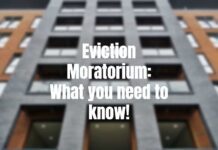I call them the Lorax committee, but their real title is the Habitat Stewardship Committee and three of them also serve as the Tree Board for the City of Madison. They speak for the trees . . . and nuts and fruits and birds and critters and conservation parks. Here’s what was on their agenda yesterday . . . a quick/briefer recap.
The members of the committee are Janet Parker, Steven Bassett, Evelyn Howell, Brock Woods and Daniel Einstein. They were staffed by 6 parks department staff.
WILDLIFE AT WARNER PARK
Jim Carrier says he lives by Warner Park ans says there are hundreds of birds and critters that use the parks with people. People say that wildlife is what makes Warner Park so special. He says it is a miracle that birds arrive from Chili in the spring and they need to be protected. Over time there has been an increase in moving and pruning and trimming of the wildlife habitat. He says he doesn’t know if that is a result of policy or equipment, but it looks more like an English Manor or golf course. He would like to see them create a policy to manage this. He says that they need to concentrate on prairie restoration on the high meadow, meadow at foot of sled hill should be less mowed with maybe only a path and the wild barrier around the water to reduce geese. Would like to see the efforts extended to the neighbors as well, and ask them to trim minimally and not use poisons. He says they should re-examine their invasive species policies because it results in brush being bad, to a bird brush is not illegal, birds will arrive and he would like them to consider habitat from their point of view.
NO SIGNS IN TREES
Seems like a no-brainer, but staff say that its not that simple and they need more time to work on some issues that came up.
MULCHING
Marla Eddy, City Forester explains her handout. They drafted a policy on how much material should be added and when and identifying the results of too much mulch or incorrectly mulching. The mulch should be 2 to 4 inches. This is the same policy as required in public works contracts. Marla says staff would check the mulch and not add it if not necessary. If its gray, they may just turn it over to make it look fresh. They have suggestions about the hand out and how to make the policy succinct and use the handout as educational materials for seasonal staff. They express concerns about turning mulch and about what grows in it (sorry, missed it) and how hard it is to turn. One member says they just die the top of the wood chips for their condo owners. There is concern that this policy is just for parks and there are other departments that deal with trees especially in the road medians. They ask about making it a city wide policy. The item gets referred.
NEW SPECIES OF TREES
They approved three new trees to be added to the species list for Madison. The committee approves the species list every year. This year it is Crimson Spire English Oak, Pink Flare Cherry and Katsura (I hope I got those right!). They ask questions about invasive species issues and have concerns about mixing with native species. Ask that DNR invasive species experts and USDA for new trents. They say they don’t want to ban ornamental trees, but need to be careful. They need approval so that they can start planting this spring starting April 12th. They approve contingent on double checking on the invasive species issue.
TRIMMING CITY TREES FOR PROPERTY OWNER SOLAR PANELS
Marla Eddy explains the issue before they hear from the speakers. She says that there was a request to prune a tree because of blocking solar panels. She says they investigated and it was a Columnar Norway Maple with a 12 inch diameter with an 8 foot growth space, height 47 feet and 13.5 foot tree canopy. It’s been there for some time, maximum growth is 15 feet. Their policy is not to prune ofr sihes and solar panels. This panel was installed 3 years ago. The issue is efficiency of the solar panel and potential to interfere. Usually a request comes in, they evaluate and then grant or deny the request. There was nothing wrong with this tree, its in good condition. She talks about other policies that look at adjacent property rights vs public goods. She says in this case, they would need to remove the tree, couldn’t trim the height of the tree. She recommends it not be pruned. Removal, if they followed the procedure for first time driveways would be that they evaluate the true and issue the permit to the property owner, they are responsible to pay for tree and stump removal. And it would only be granted after evaluation and valuation of the tree based on diameter inches of the tree. This is the same valuation as in the public works contracts. The money is then used to replant a tree within the block first, then within a few blocks and then in a park or conservation area in the neighborhood if they can’t find a suitable location. They are here to hear an appeal of the denial and to look at the policy.
Donald Miner says he doesn’t know if he has a problem right now, but thinks that they should set a policy because these types of requests will become more frequent. He says they should look at the size of trees. Briefly talks about benefits of solar and the amount of time it takes to get paid back, he says its a moral issue for him not money, but he has had bills that have been negative. He says they lost a tree and decided to put in solar, they installed the array and it cost $20K and got tax credits for it. It’s a 20 year return on his investment. They started to notice the shading, and he is just looking for some sort of a policy. He did get a Focus grant for the installation.
Chris Donald (??) from H & H Solar also spoke. Explained what it takes to get a Focus grant. He says he’s here to address the larger issue, there has been an increase in solar electric installations and it has come up before and it has been dealt with in other ways. Sometimes the utility company will trim it when they are trimming something else. He’s looking for a policy to address this, 99% of people buying solar are fans of trees, but they are also making an investment and they are wondering if there is a happy medium. He talks about case law in other states. He says Madison is pushing solar and they should find a way to deal with this issue.
They ask Marla Eddy to bring a proposed policy about existing trees and trees that would be planted. Eddy explains that Attorney Voss in the past said that if the building or tree was there first, matters. She says each tree would need to be evaluated on a case by case basis. They also want to know how shading would be evaluated regarding solar panels.
FRUITS AND NUTS
They handed out the new species list and review process at the meeting. They say there are about 10 – 15 core people and about 200 others who are interested in this issue. Staff worked really hard and quick to get this done to make it on time for some grant requests. People want to start with edible landscaping this spring. Staff says there has been alot of interest. The grant requires them to have 12 trees, and in order to see if they were compatible they reviewed the plans, the master plan, and the flow chart speaks to the process. It’s a template they are using and will refine for the future. Things they looked at were the amount of space, location in the park, potential water source, how to access it, the master plan, potential plantings, if it were trees or vines, make sure alder is supportive of the request and essentially followed the community gardens procedure. They have agreements to make sure that once established they remain resposible for what is planted and maintain it into the future. The agreements are 5 years. The staff say its a no-brainer if they want the orchard in a managed meadow that is not being mowed, are not in athletics areas and is tucked away from traffic. There is push back from committee members to think about the wildlife as well. They set up a staff team to review the applicaitons and they would evaluate and if there are no conflicts it would move to the next level. At that point they need a detailed planting plan. Staff say the species list was just revised this morning and they need to pick from that list. They will also need a harvest plan so that there is no nuisance with rotting fruit. If they make it through that level with the staff and superintendent review, it would then go to the Parks Commission for approval.
Commissioners says they can’t approve a species list that was just handed to them. They don’t want to be a rubber stamp. They ask about timing and the staff say that the grant was due Feb 28 but they don’t know when they will know the results. They express concern that they consider wildlife habitat impacts when placing the orchards. They ask about how conflicts would be resolved. Staff say they would make suggestions for other areas to place it in. Commissioners asks if that could just be done in advance and they say there are too many parks to do that. They ask what happens if conflict are not resolved and they say that they would appeal to the Parks Commission. They ask about conflicts between park users and they say that the political process can deal with that but that is why they want alder approval. They confirm that this would all be organic, no pesticides. There are already a half dozen applications. They ask about the city liability if someone is injured and the risk manager says it is covered in their insurance. There is concern about there being a maximum size for the plots since these are long term commitments if they are trees. Staff give examples of easier ones to approve and those they had to deny. Commissioners express support, say they don’t want to be a roadblock to moving the process along, but that they need to have time to look at the species list.
Their next meeting is April 20th.




